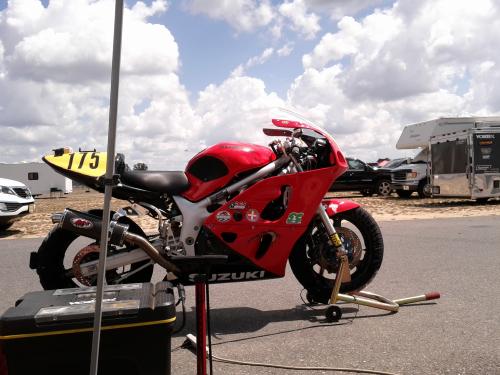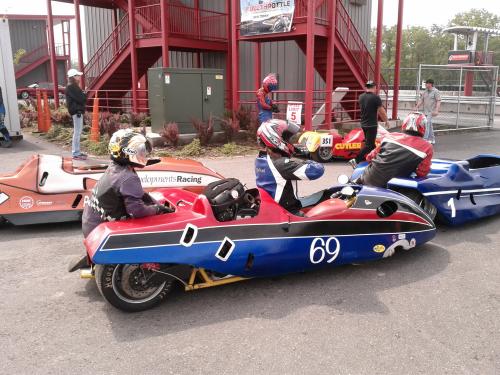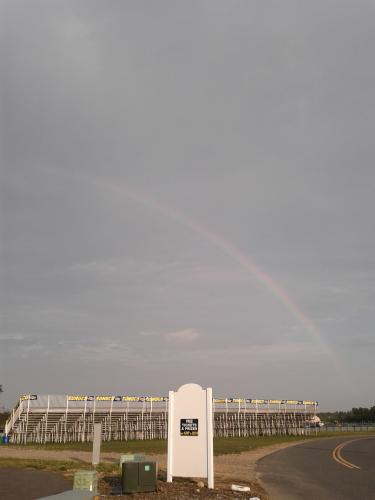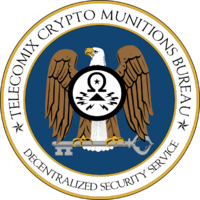CCS Race Weekend #3
We flew into JFK on Friday night at 11:45pm and I had to be at the track by 7:00am Saturday morning so I could get through registration and tech inspection in time to get ready for a practice session. I had the trailer packed and ready to go so there wasn’t much to do once I got home. As soon as we pulled in the driveway I got the trailer hooked up and double checked everything. I got in bed around 2:15am and set the alarm for 3:45am. I was so wound up I couldn’t get to sleep. I think I got about an hour of sleep, but the drive down to NJMP was peaceful and I stayed alert.
I arrived at the track on time and got set up and put some fresh tires on the bike. Tech and registration were quick and the 1st practice session rolled around and it was time to go out. I was on a front tire that I had not tested before and my turn-ins were coming too soon and I was missing apexes. I didn’t know if it was the tire or my lack of sleep but I knew there was no time to figure it out, I just had to adjust to it. I didn’t have the energy to do the second session of practice so I rested through lunch till the first race. I had 6 races scheduled for the weekend and 2 were on Saturday, Thunderbike and GTL (25 minute race). I was glad the sprint race came before the GTL due to my energy level. Sunday was to be the LW F40, ULWSB, LWSB, and LWGP.
Thunderbike was really the first race/race-pace I had run in a month. I got off the line pretty well but i got swallowed up in turn one. A rider on the inside came in hot and ended up pushing up against me through the turn. Something on his bike left scuff marks on the top of my gas tank. Rubbing is racing as they say. I was 6th through turn one. The rider that made contact with me refused to give position in turn 4 and I saw him lean on the outside of the passing rider. He was wide at that point and ran out of track. Sweet justice on that one and I was glad to take his position. I stayed with the pack and settled into a pace and wound up finishing 3rd. I had 2 races to rest up and go out for the 25min GTL. I wasn’t sure what I would be capable of doing so I was prepared mentally for any result or even a DNF if I got too tired. I don’t really remember much from this race other than wishing hard for the white flag. I took 2nd which was pretty good considering my condition and was actually chasing down the leader and was in position to pass him in the last lap but I couldn’t get it done. I worked up an appettite and the plan was to eat well and sleep well to prepare for Sun.
Sat was a beautiful 80+- mostly sunny day. Sunday was forecast with nothing but rain and thunderstorms and then more rain. Ugly. It actually started with the thunderstorms during Sat night which interrupted my good sleep plans a bit along with my deflated air bed. I woke up early and the morning was overcast and dreary but there was no rain and the breeze promised to provide some drying track. That proved to be true and reports from the practice sessions were that a wide dry line had appeared. I was on my slicks so that was good news to me. I had LWF40 as the first race of the day. When I got out for the sighting lap I started to doubt the dryness of the track and was getting worried. But I also knew that most other riders were on rain tires so if it really was dry I would have the advantage. On the start and first lap I was able to pick out the trouble areas that were wet or damp and then was able to get comfortable with a good pace. I worked my way through the field and ended up behind a Ducati 900 rider that I had finished behind before and I didn’t what to finish behind him again. I was on him for the last couple laps and saw that he was on rain tires. I knew I could get him but he had the horse power on me so I would have to do it late on the last lap to keep his chances of retaking me at a minimum. Also I wasn’t sure he knew I was there. I didn’t want to tip my hand. So I waited till the decreasing section of T8 where I felt strong and went around him on the outside, then I could see him concede the position and I tipped over into the left handed T9 and focused on a defensive line to keep him behind me. It worked and just as I crossed the finish line he passed me on the left and gave me a smile and a thumbs up. My first 1st. It felt great and after that I didn’t really care if I got rained out for the rest of the day.
Rained out it was too. My next race on Sun was ULSB. The sky was ominous but the track was in the same condition as my last race so I was ready to go. A few drops started falling on the out lap. We started the race and by the time were at T9 the sky opened up. I pitted in immediately, there was no way I could keep going on slicks. They red flagged it right after that and re-ran it later as a wet race. I did not participate. I sat out that race and the LWGP later. I hated to miss the LWGP because I had been leading the NJMP points in that class. Luckily though, race direction ended the day early and will run the final few races at the next round in September. That means that I get to run LWSB then and didn’t have to miss it due to my not riding in the rain.
The rain was relentless until about 6:00pm so we were pretty wet and tired by the end of the day. It was overall a great weekend. Theo left with one 3rd place trophy and I had the 3. Four podiums on the weekend for a couple old and graying weekend warriors is pretty good. Next races are Sep. 9-11.












![[FSF Associate Member]](http://www.hx4.com/wp-content/uploads/2015/03/FSF-52816.png)

